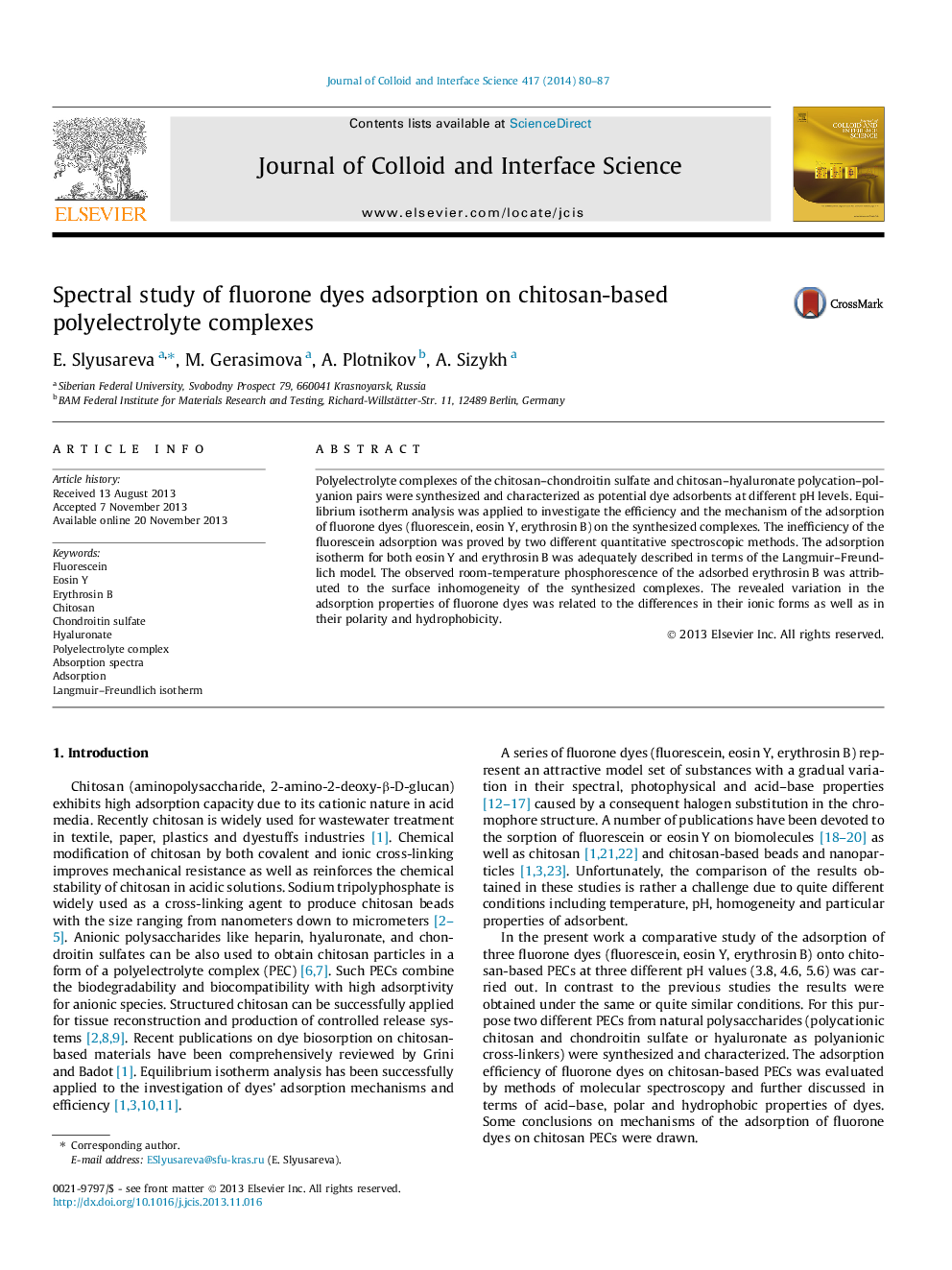| Article ID | Journal | Published Year | Pages | File Type |
|---|---|---|---|---|
| 607544 | Journal of Colloid and Interface Science | 2014 | 8 Pages |
•Two new polyelectrolyte chitosan-based complexes were synthesized and characterized.•No adsorption of fluorescein on PECs was detected.•The dye adsorption on PEC was described by the Langmuir–Freundlich model.•Higher polarity and hydrophobicity increase dye adsorption affinity.•The phosphorescence of erythrosin B was explained by a microrelief on the PEC surface.
Polyelectrolyte complexes of the chitosan–chondroitin sulfate and chitosan–hyaluronate polycation–polyanion pairs were synthesized and characterized as potential dye adsorbents at different pH levels. Equilibrium isotherm analysis was applied to investigate the efficiency and the mechanism of the adsorption of fluorone dyes (fluorescein, eosin Y, erythrosin B) on the synthesized complexes. The inefficiency of the fluorescein adsorption was proved by two different quantitative spectroscopic methods. The adsorption isotherm for both eosin Y and erythrosin B was adequately described in terms of the Langmuir–Freundlich model. The observed room-temperature phosphorescence of the adsorbed erythrosin B was attributed to the surface inhomogeneity of the synthesized complexes. The revealed variation in the adsorption properties of fluorone dyes was related to the differences in their ionic forms as well as in their polarity and hydrophobicity.
Graphical abstractFigure optionsDownload full-size imageDownload high-quality image (88 K)Download as PowerPoint slide
